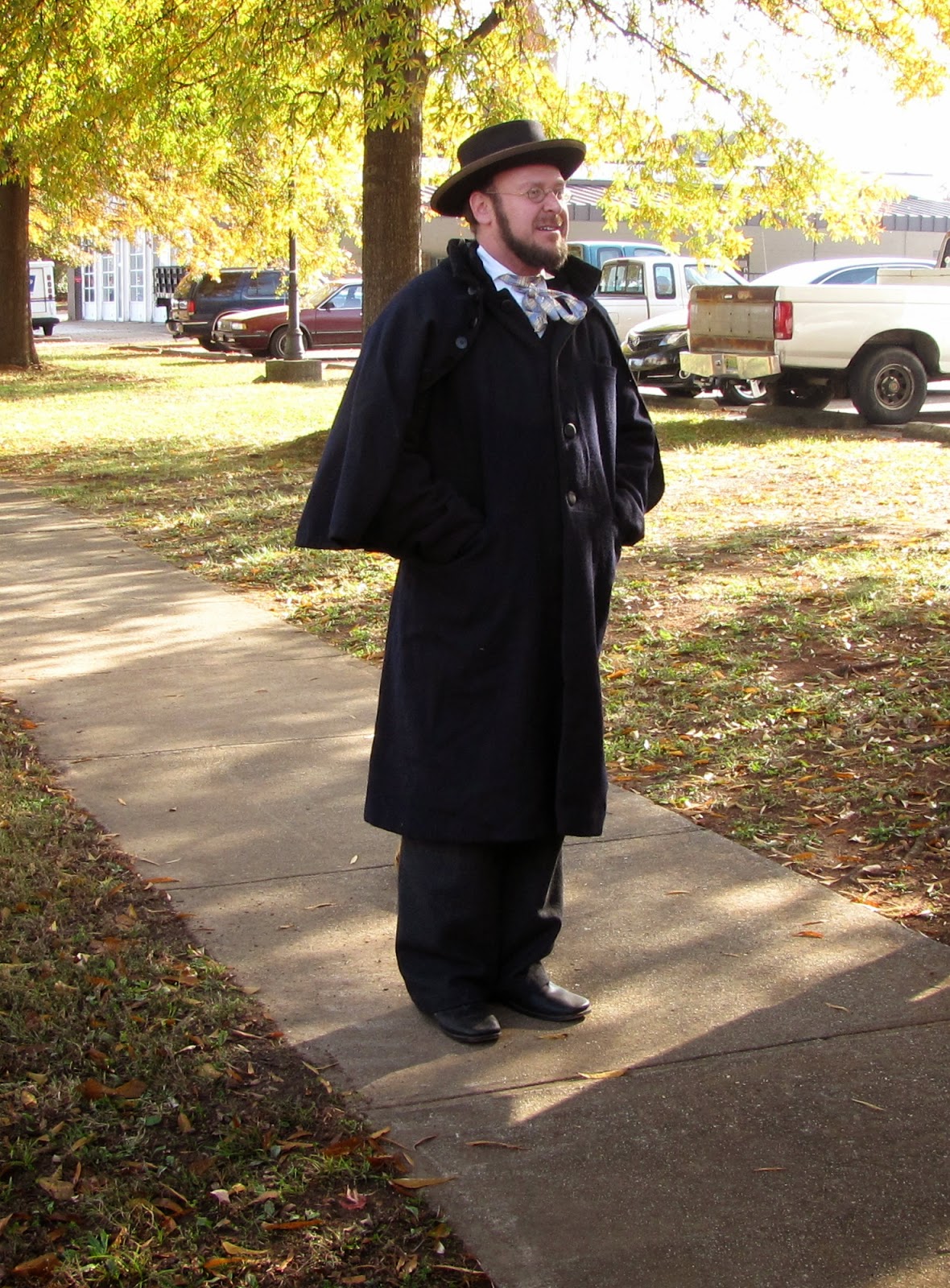Last Saturday, my friend, Sandra, and I went on a tour in downtown Florence called Footsteps of the Blue and Gray. It was led by Lee Freeman and sponsored by the Florence/Lauderdale Public Library. The tour began in Wilson Park, one of my favorite places in town. When Ferdinand Sanonner surveyed the place that would become Florence in 1818, he picked one block near the center of town for a 'public walk'. It was renamed for Woodrow Wilson after his death in 1924.
We met Dr. William H. Mitchell, who was pastor of the First Presbyterian Church and president of the Florence Synodical Female College. During the war, Dr. Mitchell was arrested by Union soldiers for praying for Jefferson Davis during one of his sermons.
We toured the Masonic Lodge, a first for me because women aren't usually allowed. The Lodge was burned in May 1863, allegedly by accident, by Union soldiers who were burning other businesses that were sympathetic to the Confederacy.
Governor O'Neal was there to share his war experiences with us. He sure seemed happy to be home.
Across the street from the O'Neal home, soldiers stand guard at the door of what is now Coby Hall, because General Hood was staying there.
Courtview, home of the Fosters, is now Rogers Hall, part of the University of North Alabama.
Sallie Independence Foster, a young teenager during the war years, kept a diary which has provided much information about the war. She came out and told us what it was like living there during that time. Unfortunately, in the middle of the crowd, an elderly man's phone rang; he answered it and talked loudly during the whole oration, so we were not able to hear much of what she said. We had been asked to silence our phones. I'm guessing he thought that didn't include important people like him.
We also got a lesson on how to use these weapons if the need should arise.
We walked across campus to Wesleyan Hall, which Union General William T. Sherman and Confederate General John Bell Hood used as their headquarters at different times. Some people claim to have seen General Sherman's ghost in the halls at Wesleyan, but I haven't. Last Saturday, he was out on the front lawn with a couple of his soldiers. I wonder if he would be amused to know that he burned Atlanta so completely, they are still trying to get it rebuilt 150 years later?
We heard taps and more on the bugle.
Pope's Tavern is a museum now, but during the war, it served as a hospital for both Union and Confederate soldiers. Those sweet Southern mamas took care of every wounded soldier that made it to their door.
Richard O. Pickett and his wife very graciously welcomed us to Pickett Place, a beautiful example of Tidewater architecture in Alabama. Captain Pickett served in the 35th Cavalry under General Philip D. Roddey.
The tour ended at Pickett Place. It had been very enjoyable and informative, but I was ready for it to end because it was blue-butt cold and I was turning into a chuck of ice. I have been on several tours like this, but they are all a little different and always fun.





















Comments
Post a Comment